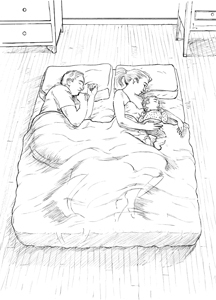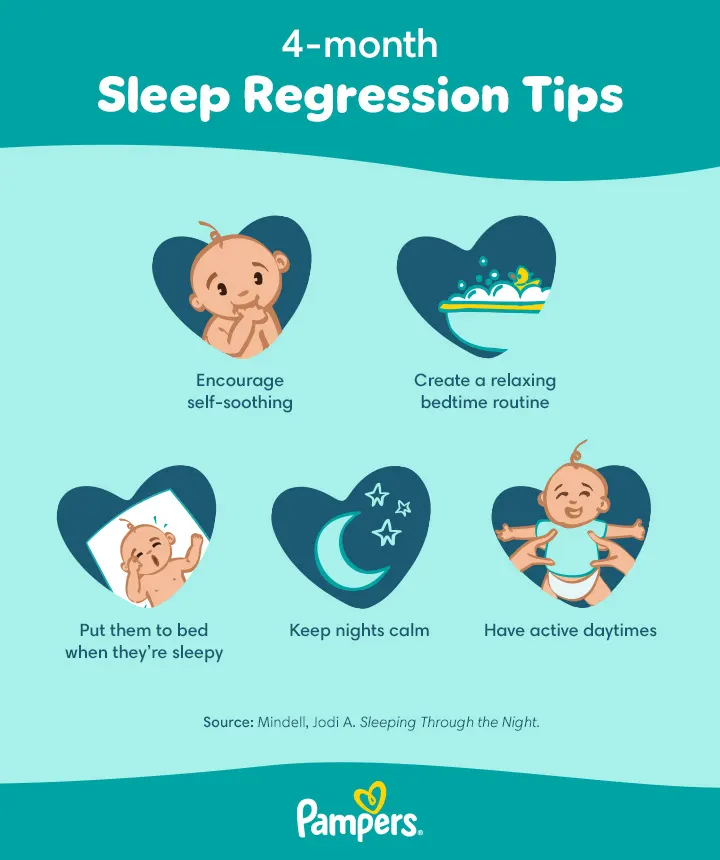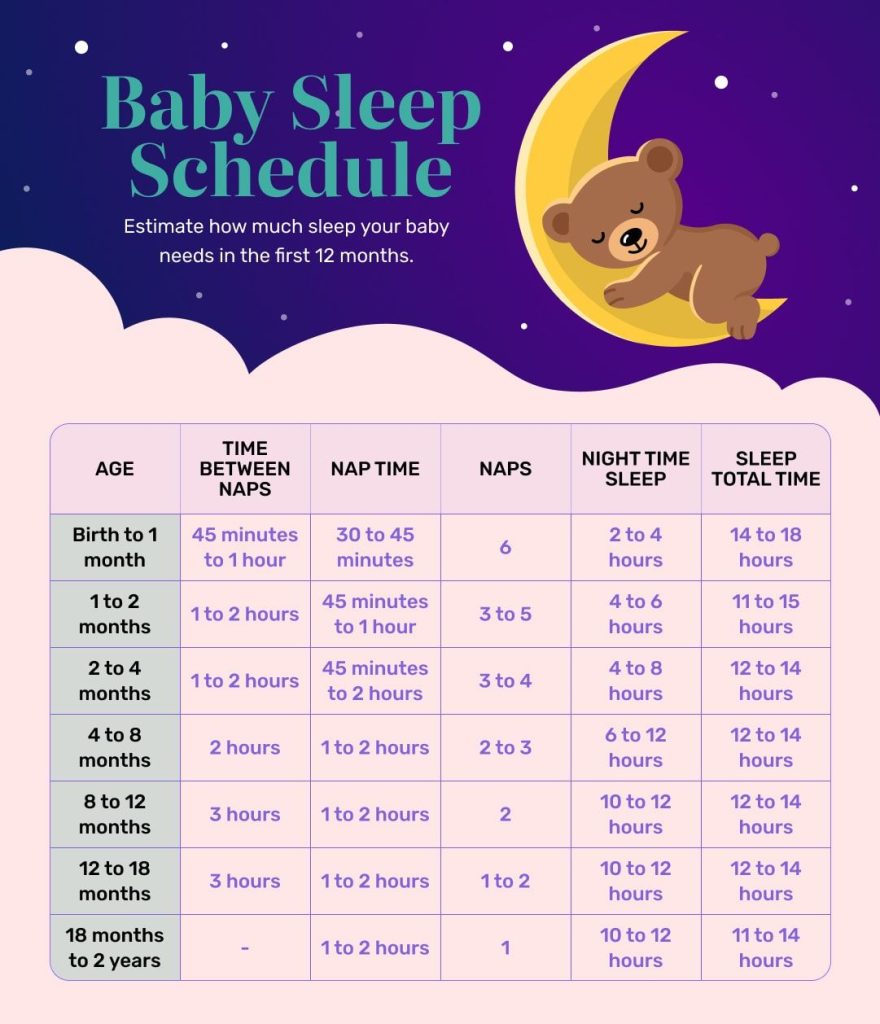Co-sleeping and bed-sharing carry risks, especially for infants. Experts recommend separate but nearby sleeping arrangements to ensure safety.
Co-sleeping and bed-sharing are common practices among parents seeking to bond with their infants and ensure easy nighttime care. Despite the emotional benefits, these practices pose significant risks, including Sudden Infant Death Syndrome (SIDS) and accidental suffocation. To safeguard infants, experts advise using a separate but nearby sleeping space, such as a crib or bassinet, placed close to the parents’ bed.
This setup allows parents to maintain proximity while ensuring their baby’s safety. Following these guidelines helps minimize risks and promotes better sleep health for both parents and infants. Always prioritize safety and consult pediatricians for personalized advice.
Introduction To Co-sleeping And Bed-sharing
Parents often wonder about the best sleeping arrangements for their babies. Co-sleeping and bed-sharing are two options. Knowing the differences and safety concerns is crucial.
Definitions And Differences
Co-sleeping means parents and children sleep in close proximity. This can be in the same room but not necessarily in the same bed. Bed-sharing involves parents and children sharing the same bed. They are similar but not the same.
- Co-sleeping: Baby sleeps in a crib or bassinet near the parents’ bed.
- Bed-sharing: Baby sleeps in the same bed as the parents.
Historical And Cultural Perspectives
Different cultures have varied sleeping practices. In many cultures, co-sleeping has been common for centuries. In some Asian countries, bed-sharing is a traditional practice.
| Culture | Preferred Practice |
|---|---|
| Western | Separate sleeping arrangements |
| Asian | Bed-sharing |
Modern Western societies often prefer separate sleeping arrangements. This is due to safety concerns and recommendations from pediatricians.

Credit: m.facebook.com
Benefits Of Co-sleeping
Co-sleeping has sparked debates among parents and experts. Yet, many parents find benefits in sharing their sleeping space with their children. Let’s explore the benefits of co-sleeping under various aspects.
Emotional Bonding
Co-sleeping helps strengthen the emotional bond between parents and children. Children feel more secure and loved when they sleep close to their parents. This closeness can reduce stress and anxiety in children. It also creates a sense of safety and comfort.
Ease Of Breastfeeding
Co-sleeping makes breastfeeding easier for mothers. Night feedings become more convenient and less disruptive. Babies can nurse more frequently, which can help maintain a good milk supply. This proximity can also foster a better breastfeeding relationship.
Risks Associated With Co-sleeping
Co-sleeping can create a special bond between parents and infants. Yet, it also carries risks. Understanding these risks can help parents make informed choices. Let’s explore the main dangers of co-sleeping.
Sudden Infant Death Syndrome (sids)
Sudden Infant Death Syndrome (SIDS) is a leading cause of death in infants. SIDS is the unexplained death of an otherwise healthy baby. It usually occurs during sleep. Research shows that co-sleeping increases the risk of SIDS.
To reduce the risk, consider these precautions:
- Place the baby on their back to sleep.
- Use a firm mattress.
- Keep pillows and blankets away from the baby.
Accidental Suffocation
Accidental suffocation is another major risk of co-sleeping. Babies can suffocate when trapped between a parent’s body and the mattress. They can also suffocate if a parent rolls over onto them.
Here are ways to minimize this risk:
- Avoid heavy blankets and pillows near the baby.
- Ensure there are no gaps between the mattress and the bed frame.
- Consider using a co-sleeper bassinet attached to the bed.
Understanding these risks can help you make safer choices for your baby.
Expert Opinions On Co-sleeping
Co-sleeping and bed-sharing are common practices among parents. Many experts have shared their views on the safety of these practices. Let’s explore what pediatricians and sleep specialists think about co-sleeping.
Pediatricians’ Views
Pediatricians emphasize the importance of safe sleep environments for babies. They often advise against bed-sharing due to the risk of sudden infant death syndrome (SIDS).
A table below summarizes key points from pediatricians:
| Aspect | Pediatricians’ Recommendations |
|---|---|
| Bed-sharing | Generally advised against due to SIDS risk. |
| Room-sharing | Encouraged for the first six months. |
| Safe Sleep Practices | Use firm mattress, avoid soft bedding. |
Sleep Specialists’ Insights
Sleep specialists focus on creating safe and healthy sleep habits. They often discuss the pros and cons of co-sleeping.
- Pros: Easier nighttime feeding, bonding time.
- Cons: Risk of suffocation, disrupted sleep patterns.
Sleep specialists recommend a balanced approach. They suggest creating a separate sleep space for the baby within the parents’ room.
Safety Guidelines For Co-sleeping
Co-sleeping can foster bonding and ease nighttime feedings. Ensuring a safe environment is crucial. Follow these guidelines to make co-sleeping safe and comfortable for everyone.
Safe Sleep Environment
A safe sleep environment is vital. Start by choosing a firm mattress. Soft surfaces increase the risk of suffocation. Avoid using soft bedding, pillows, or stuffed animals. These items can pose a suffocation hazard.
Create a clear space for your baby. The baby should sleep on their back. This position reduces the risk of Sudden Infant Death Syndrome (SIDS).
- Firm Mattress: Use a firm mattress for safety.
- Back Sleeping: Always place the baby on their back.
- Clear Space: Remove pillows, blankets, and toys.
Parental Precautions
Parents should take specific precautions. Avoid alcohol and drugs. These substances can impair your awareness. Ensure you are alert and can respond to your baby.
Do not co-sleep if you are extremely tired. Exhaustion can make you less aware of your baby. If you smoke, avoid co-sleeping. Smoking increases the risk of SIDS.
- Avoid Substances: Steer clear of alcohol and drugs.
- Stay Alert: Ensure you are not overly tired.
- Non-Smoking: Do not co-sleep if you smoke.
| Precaution | Reason |
|---|---|
| Firm Mattress | Reduces suffocation risk |
| Back Sleeping | Lowers SIDS risk |
| Avoid Alcohol and Drugs | Keeps parents alert |
| Remove Soft Items | Prevents suffocation |

Credit: in.pinterest.com
Alternatives To Bed-sharing
Parents often seek safe alternatives to bed-sharing. Below are some great options for keeping your baby close while maintaining safety.
Room-sharing
Room-sharing is a popular alternative to bed-sharing. It involves placing your baby’s crib or bassinet in your bedroom. This practice allows you to keep a close watch on your baby throughout the night.
According to pediatricians, room-sharing can reduce the risk of Sudden Infant Death Syndrome (SIDS). Here’s why room-sharing is beneficial:
- Enables quick response to your baby’s needs.
- Promotes bonding without the risks of bed-sharing.
- Helps parents get more sleep while staying close to their baby.
Room-sharing is a simple, effective way to ensure your baby’s safety while sleeping.
Use Of Co-sleepers
Co-sleepers are special sleeping arrangements designed to attach to your bed. These sleepers provide a separate but close space for your baby.
There are several types of co-sleepers available:
- Bedside Co-Sleepers: Attach directly to the parents’ bed.
- In-Bed Co-Sleepers: Placed within the parents’ bed but have walls for safety.
- Portable Co-Sleepers: Can be moved around easily and used in different rooms.
Co-sleepers offer many benefits:
- Maintain proximity while ensuring the baby has a separate space.
- Reduce the risk of suffocation or rolling over accidents.
- Make nighttime feedings more convenient.
Using co-sleepers can help parents achieve a balance between closeness and safety.
Parental Experiences And Stories
Many parents have diverse experiences with co-sleeping and bed-sharing. These stories highlight both the positive aspects and the challenges. Understanding these experiences can help other parents make informed decisions.
Positive Co-sleeping Journeys
Many parents share heartwarming stories about co-sleeping. They find it creates a stronger bond with their babies. Nighttime feedings become easier and more convenient.
One mother said, “Co-sleeping made us feel closer. My baby slept better and cried less.”
Another parent shared, “I felt more connected. The baby felt safe and secure.”
Here are some common benefits parents reported:
- Improved sleep for both baby and parents
- Enhanced emotional bond
- Convenient nighttime breastfeeding
- Reduced nighttime anxiety for the baby
Challenges Faced
Despite the benefits, some parents face challenges with co-sleeping. Safety concerns are a top issue. Parents worry about accidental suffocation or falls.
A father mentioned, “I was always worried about rolling over the baby.”
Another challenge is the impact on marital relationships. One parent shared, “We had less private time. It affected our relationship.”
Here are some common challenges parents reported:
- Safety concerns
- Lack of personal space
- Disturbed sleep for parents
- Impact on marital relationships
Here is a table summarizing the experiences:
| Positive Aspects | Challenges |
|---|---|
| Improved sleep | Safety concerns |
| Stronger bond | Lack of personal space |
| Convenient breastfeeding | Disturbed sleep for parents |
| Reduced anxiety for baby | Impact on relationships |

Credit: cosleeping.nd.edu
Making An Informed Decision
Making an informed decision about co-sleeping and bed-sharing is crucial for your family’s safety. Understanding your options helps you choose wisely. This guide covers key aspects to consider.
Assessing Your Family’s Needs
Every family is different. Assess your family’s unique needs before deciding. Consider the following factors:
- Sleeping habits: Does your baby wake up often?
- Space: Is your bed large enough?
- Safety: Are there risk factors like smoking?
Evaluate these points to understand what works best for you. Some families find co-sleeping beneficial, while others do not.
Consulting Healthcare Providers
Consulting healthcare providers offers expert advice. They can provide personalized guidance based on your family’s health and needs. Here’s how to approach this:
- Schedule a visit with your pediatrician.
- Discuss your concerns about co-sleeping and bed-sharing.
- Ask about safe sleep practices.
Healthcare providers can recommend the best practices for your situation. Their insights help you make a safe and informed choice.
Frequently Asked Questions
At What Age Is Cosleeping Safe?
Cosleeping is generally considered safe after 12 months. Ensure your child has a safe sleeping environment. Always follow pediatric guidelines.
What Are The Risks Of Bedsharing?
Bedsharing increases the risk of sudden infant death syndrome (SIDS), suffocation, and overheating. It may also cause accidental falls. Always ensure a safe sleep environment for your baby.
Which Is An Example Of Unsafe Co-sleeping?
An example of unsafe co-sleeping is sharing a bed with a baby while using heavy blankets or pillows.
What Is The Difference Between Bed Sharing And Co-sleeping?
Bed sharing means parents and baby sleep in the same bed. Co-sleeping means parents and baby sleep in close proximity, but not necessarily the same bed.
Is Co-sleeping Safe For Babies?
Co-sleeping can increase the risk of SIDS. Always follow safe sleep guidelines.
Conclusion
Balancing the benefits and risks of co-sleeping and bed-sharing is crucial. Always prioritize your child’s safety and well-being. Consult with pediatricians for personalized advice. Make informed choices that best suit your family’s needs. Safe sleeping practices can foster a secure and nurturing environment for your baby.


